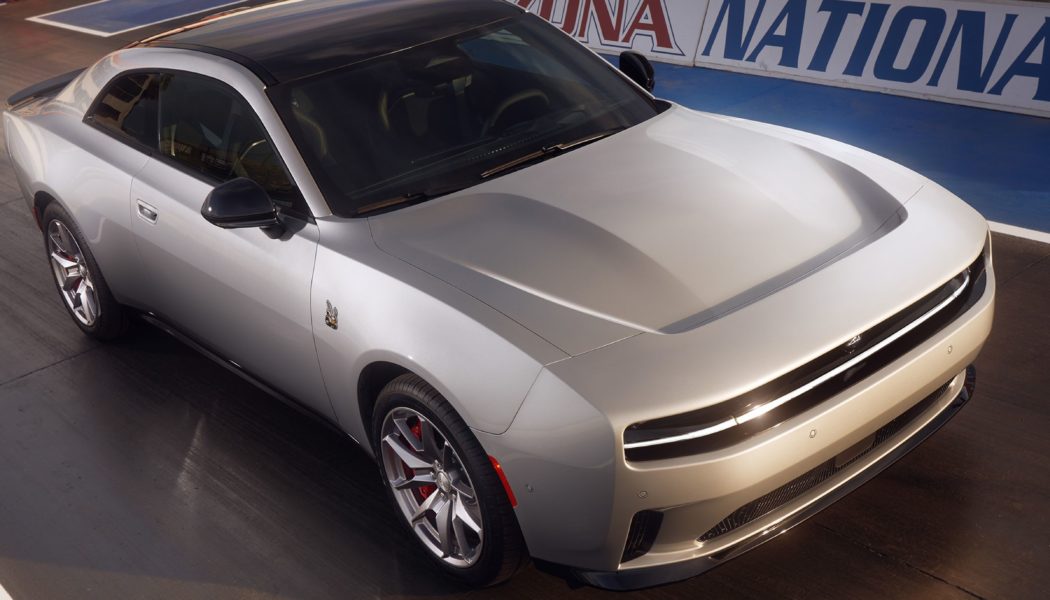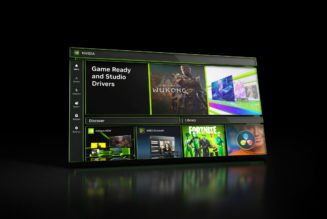The electric Charger will come in two variants, but Dodge isn’t ready to abandon the gas-gargling V8 quite yet.
Share this story
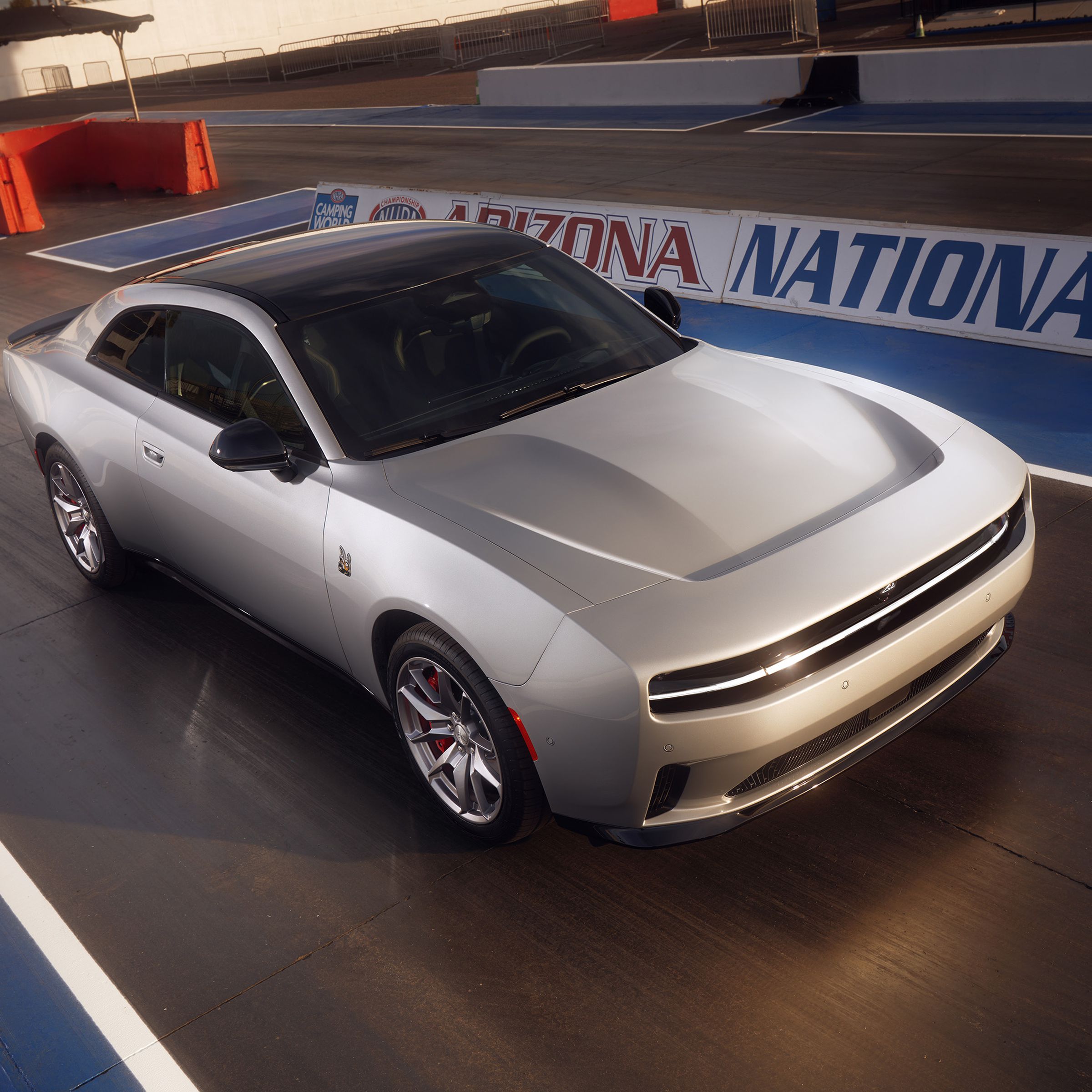
The all-electric 2024 Dodge Charger Daytona made its official debut today, with a 400-volt system and a 100.5kWh battery capable of putting out up to 670 horsepower.
The electric muscle car, which will go on sale later this year at a still unknown price, can gallop from 0–60mph in 3.3 seconds and cover a quarter mile in just over 11 seconds. And gone will be the rumbling V8 engines of the past, replaced with dual electric motors and a bit of gimmickry, like external speakers making a fake “vroom vroom” noise. (Not literally, but we’ll get to that in a bit.)
It’s been almost two years since Dodge offered the first glimpse of its electrified future in the form of its concept Charger Daytona SRT, and three years since Dodge CEO Tim Kuniskis said the brand would cease production of its gas-powered Charger and Challenger muscle cars to make way for an electric lineup. Now, even as EV sales cool off and some automakers pull back from their investments in electrification, Dodge says it’s charging ahead (yep, I said it) with its transformation.

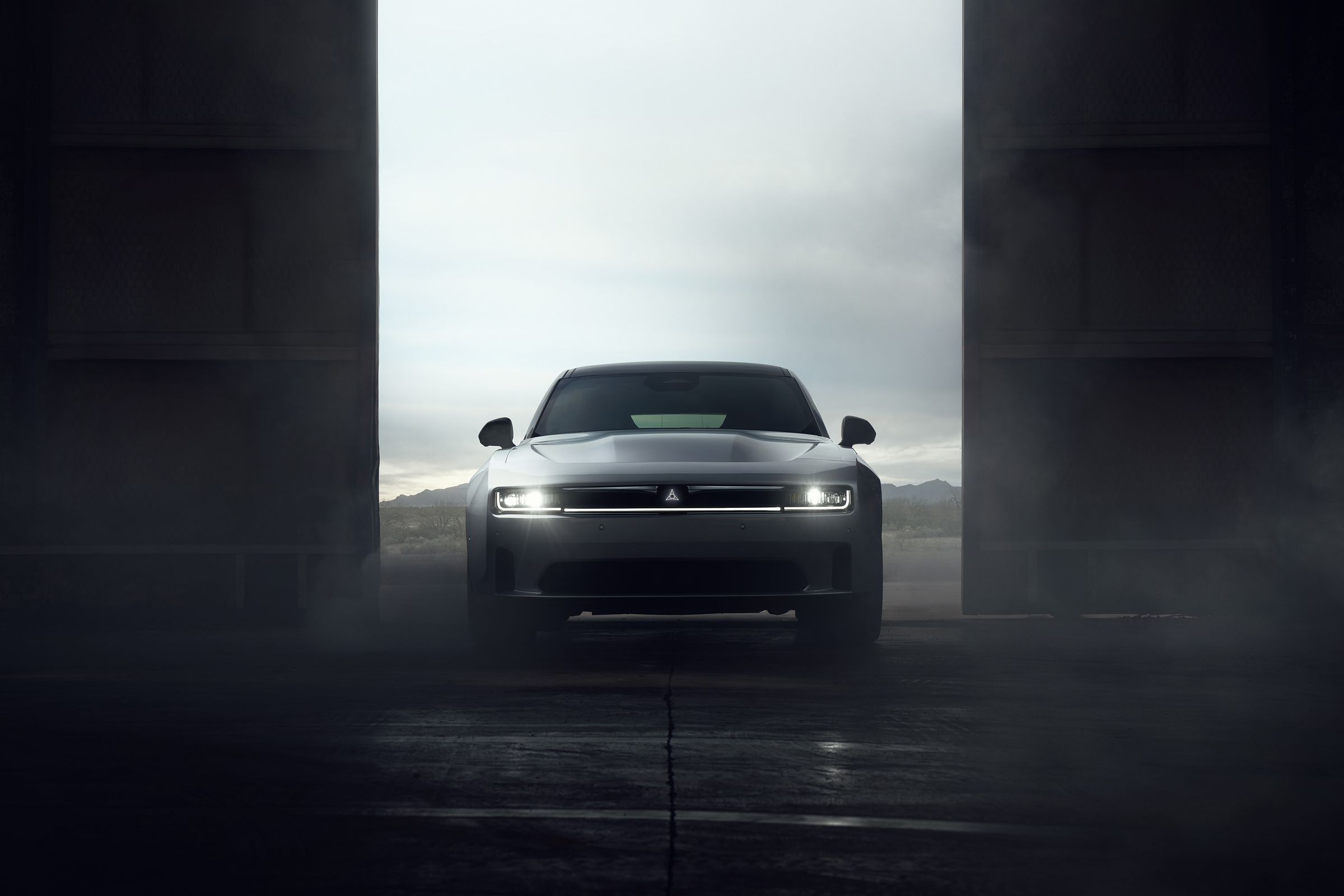
The electric Charger will come in two trims: R/T and Scat Pack, both scheduled to start deliveries later this year. There’s a two-door coupe version of each, as well as a four-door sedan. And next year, Dodge will release a refreshed internal-combustion engine Charger, powered by a 3.0L twin-turbo inline-six Hurricane engine, as well as a Banshee performance version of the electric Charger Daytona.
In other words, the company is hedging its bets — as I’m sure its customers would expect. Unwilling to bid farewell to the era of gas-slurping street-legal dragsters? No problem! Dodge still has a muscle car for you.

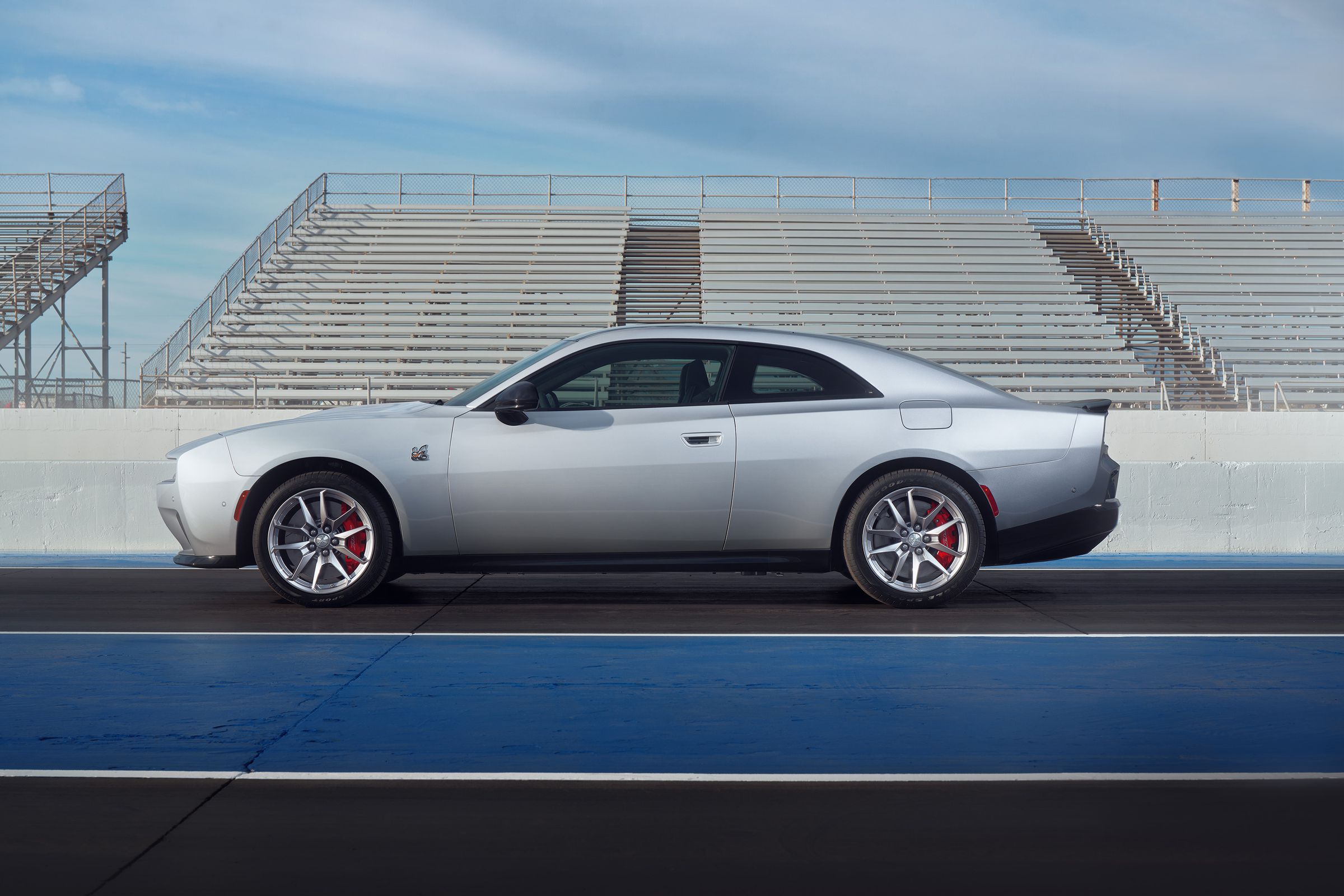
When designing the first electric Charger, Kuniskis said the company prioritized power over going the distance. “It’s not designed to get you 500 miles of range,” Kuniskis said in a briefing with reporters. “This is designed to be the ultimate performance muscle car — until we come out with the Banshee, of course.”
What kind of power are we talking? The R/T will put out 456 horsepower (496 with a Power Shot), 404lb-ft of torque, with 0–60mph in 4.7 seconds. By comparison, the Scat Pack will churn out 630 horsepower (670 with the Power Shot), 627lb-ft of torque, and sprint to 60mph in 3.3 seconds. But all that extra power will cost you some range, as the Scat Pack will only get 260 miles of EPA estimated distance, while the R/T should travel up to 317 miles.

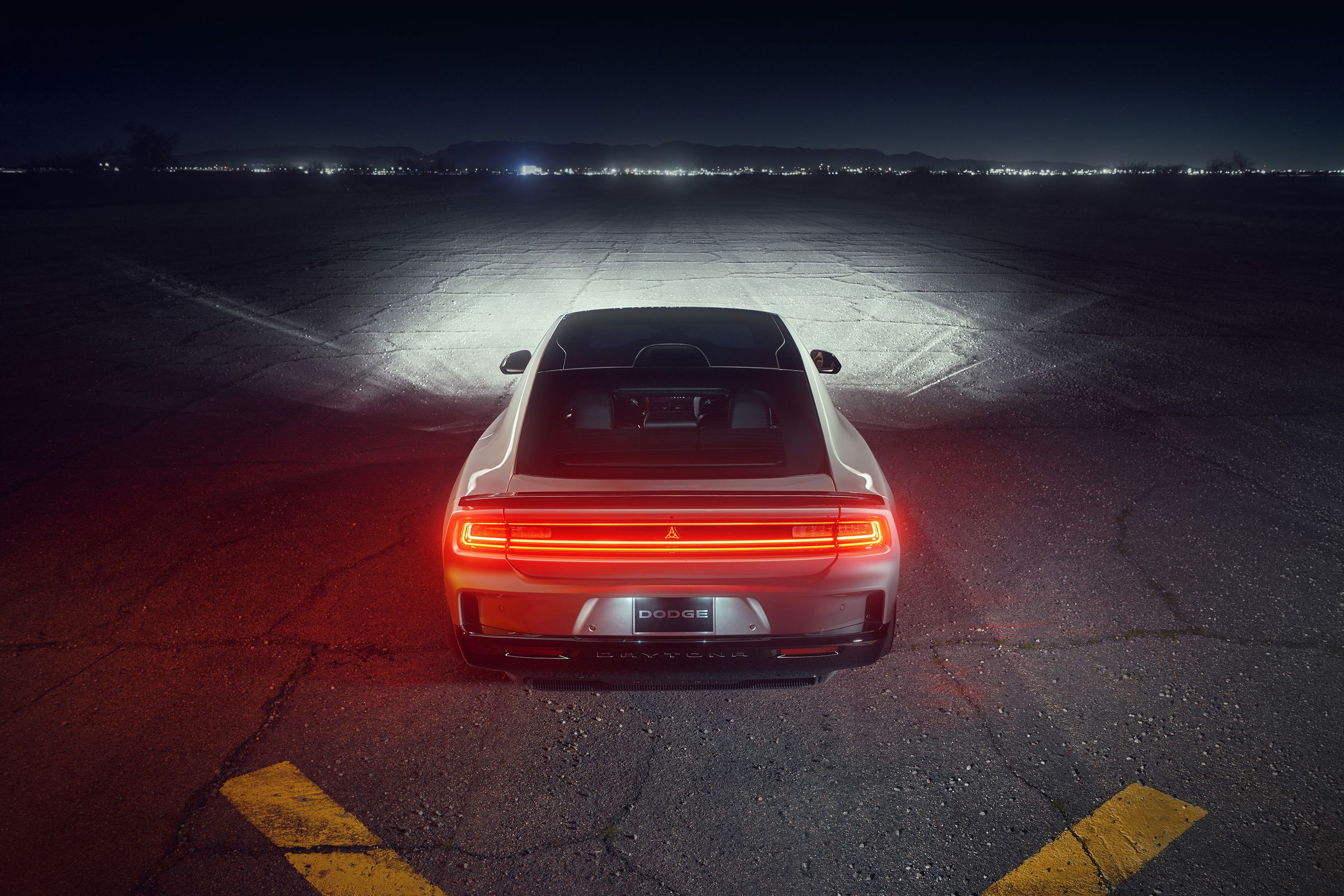
The electric Charger will be built on the STLA Large platform, which is the automaker’s top-of-the-line electric architecture mostly geared toward SUVs and larger vehicles. But Dodge wanted a bigger battery and more power for its first electric dragster, so it went with the plus-sized model.
The 100.5kWh battery will only have a usable 93.9kWh but should still be plenty of capacity for all your on-street antics. That puts the Charger EV in the same category as the Cadillac Lyriq and BMW i7, but it’s tuned to put out more ponies than similar sized EVs.
The 400V propulsion system will enable DC fast charging at a maximum rate of 183kW for both variants. When plugged into a 175kW fast charger, the Charger EV’s battery will go from 5 to 80 percent in 52.4 minutes. At a 350kW charger, that charging speed drops to 32.5 minutes.
Dodge said the new Chargers will come standard with Direct Connection stage kits, which is where you can get extra power if the factory settings aren’t enough for you. The R/T has access to the Stage 1 upgrade kit that adds 40 horsepower to reach a total of 496 horsepower, while the Scat Pack is delivered with a Stage 2 kit that offers 80 additional horsepower, taking total output to 670 horsepower.

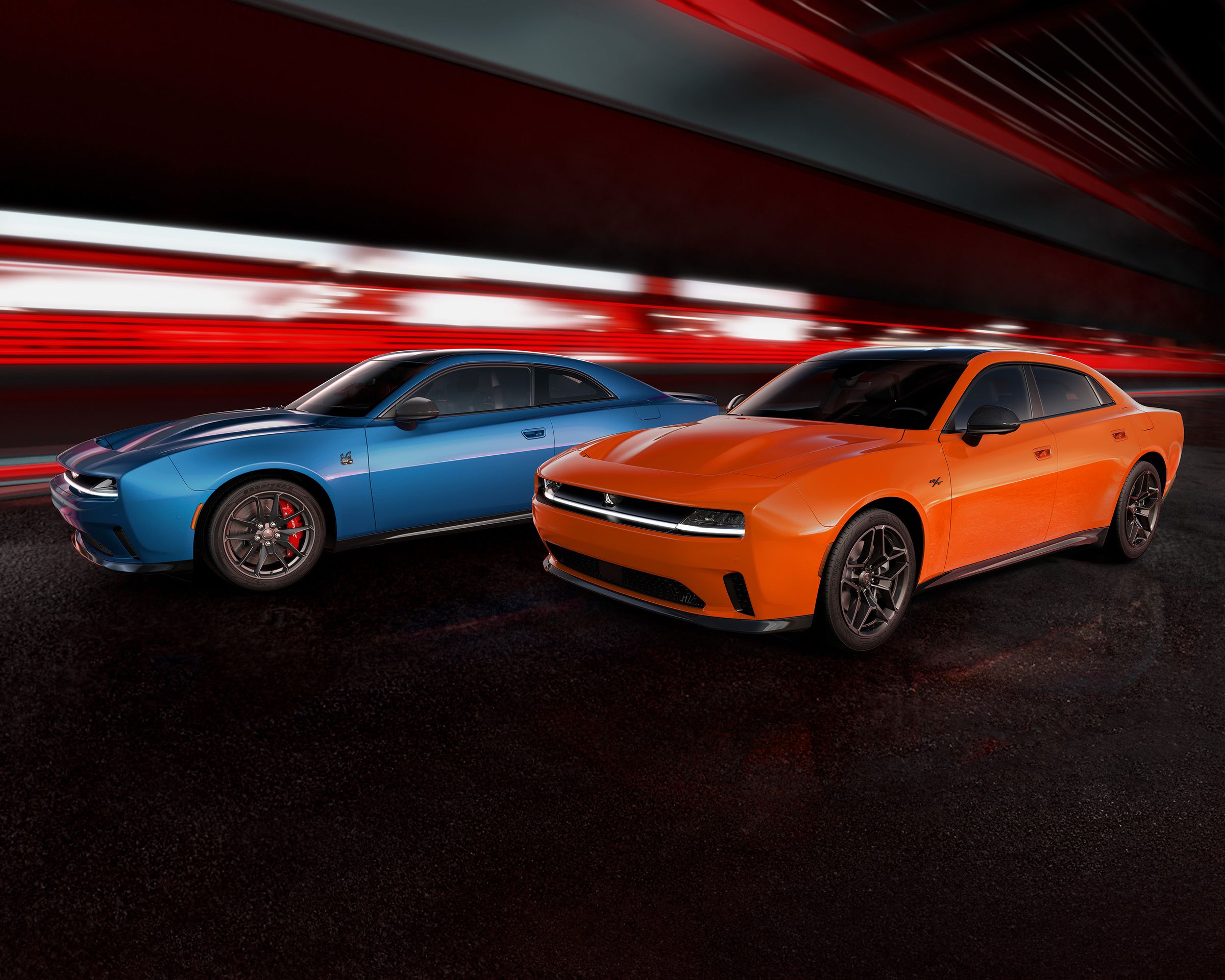
All that power will require better-than-average stopping performance courtesy of the massive 16-inch Brembo brakes and red six-piston front / four-piston rear fixed calipers. It’s the largest brake package offered on a Dodge vehicle. Moreover, a “Brake by Wire” intelligent braking system purports to use a central module to control vehicle deceleration for “optimum braking force and pedal feedback.” Mind your neck.
Like all EVs, the Charger Daytona will emit a low-speed hum to alert pedestrians and others on the road. But when the RPMs increase, the vehicle’s “Fratzonic Chambered Exhaust System” kicks in. “Sound intensity is tied to higher performance,” Dodge says, meaning the fake engine growl increases in volume — and ferocity — as the vehicle accelerates. And yes, there are speakers.
Kuniskis insists the company cleared the faux exhaust with a select group of customers before signing off on the final design. But no doubt the faux growl will remain controversial with some diehards, even as electric performance becomes more commonplace.

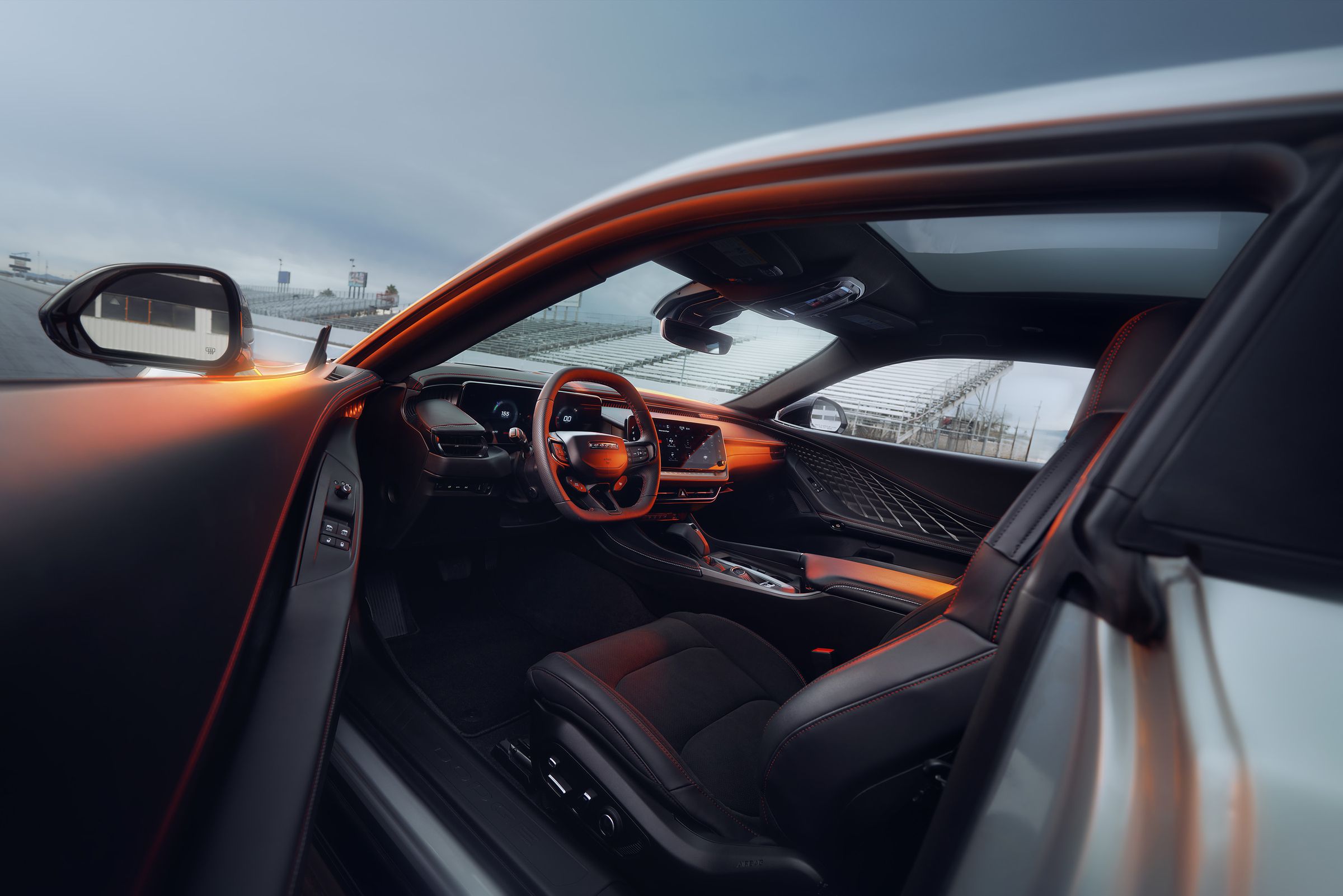
There are plenty of drive modes, including the standard Auto, Eco, Sport, and Wet / Snow. For the Scat Pack trim, drivers will get two additional drive modes: Track and Drag. Track mode produces “maximum vehicle performance capability on smooth, dry surfaces, while Drag Mode, intended for use on an enclosed dragstrip, provides optimal dragstrip launch and straight-line acceleration.”
The release of the first electric Dodge muscle cars is a momentous occasion, especially considering how cagey the company has been about the shift to EVs. During a 2021 event by parent company Stellantis, Kuniskis proclaimed that Dodge would not “sell electric cars — it will sell eMuscle,” which is apparently Dodge branding for its future EVs. And last week in a briefing with reporters, he called the present moment “schizophrenic,” with companies needing to sell more ICE cars in order to fund the transition to EVs.
Dodge also screened a somewhat entertaining video for reporters of Kuniskis traveling back in time in the electric Charger to 1900 to give the original Dodge brothers, Horace and John, a tour of the company’s electrification efforts. The video is amusing — Kuniskis goes on an extended rant against “kale smoothies” for some reason — but it also lays bare the tension between Dodge’s 124-year-old legacy and its place in a more uncertain, less polluting future.
“The car we designed doesn’t look like a typical battery electric melted jelly bean,” Kuniskis boasts, as CGI-generated versions of Horace and John nod in admiration.
